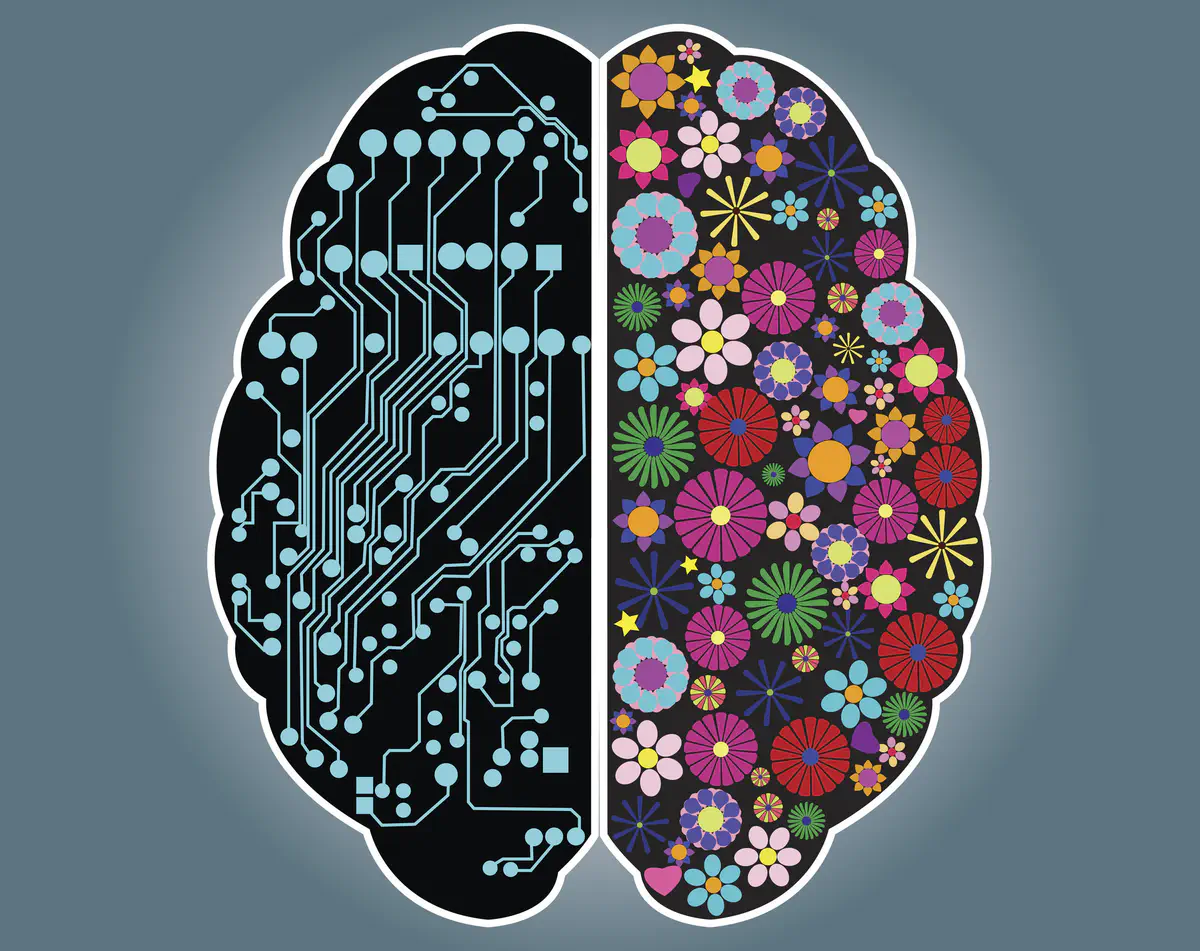Five Lessons I Learned Going From Psychology to Data
Five transferable ‘C skills’ between fields: Context, Communication, Cooperation, Creativity, and Compassion.
 Image featured in Robert Schmerling’s Harvard Health’s article, “Right brain/left brain, right?”
Image featured in Robert Schmerling’s Harvard Health’s article, “Right brain/left brain, right?”
Originally posted on Medium.
TL;DR
Going from psychology and social science to data analytics and computational science, I have found five “C skills” that are relevant and transferrable between fields:
- Context — where is the data and the behavior coming from?
- Communication — how to explain findings to non-technical audiences?
- Cooperation — are my theories and codes methodologically sound?
- Creativity — how do you find and explain insights without being generic?
- Compassion — where is my audience and task at hand coming from?
I’ve recently asked myself what role people from social sciences can play amidst the artificial intelligence (AI) hype. Even though it’s been several years since I transitioned from studying the human brain and behavior to the world of data and analytics, I figured it would be a good time as ever to share my thoughts on (digital) paper.
My formal background is in psychology, but this was actually my second major. I started my education in industrial and systems engineering, but after one internship with the US Government, I realized I wanted to help and understand people and society.
It wasn’t until my final years in psychology that I became acquainted with the world of data and technology in the social sciences. Nearing the end of my undergraduate studies, almost simultaneously, I interned with a nonprofit and started working at a market research agency, in both instances as a Data Analyst.
These experiences opened my eyes to the possibility of using software to explore, model, and visualize vast amounts of data, ultimately leading to insights about human and societal behavior.
Fast forward to the present day. I have decided to pursue formal education in the field and have been working in technology for years, which, among other things, has involved learning how to code and returning to my engineering roots.
The Lessons
Context
I intentionally did not skip over my background because that is one of my main lessons: Context matters. Contextualizing means that social scientists can add value by explaining the stories — i.e., human and organizational behavior — behind the data.
Similar to how in psychology you must understand a person’s medical and sociocultural background before diagnosing, in analytics, you need to learn about data’s origins and assumptions.
Communication
Once you have analyzed data, how do you package and deliver findings? You can have the most extraordinary insights, but if they are not adequately conveyed, their impact can be significantly reduced or go unnoticed — in other words, communication matters.
In psychology, you often need to explain abstract theories about the human brain to patients who may not know anything about the topic. In data, you often need to translate raw information into pretty graphics or compelling stories for non-technical professionals.
Cooperation
A lot of the skills mentioned thus far imply “heads-down” work. For example, in psychology, you may spend a lot of time reading books and scientific papers about human behavior. In data, you can spend a lot of time programming and analyzing information.
But if you leave your process at this, you will only have your version of a code or your interpretation of a behavioral theory. Not only is this limited, but it is also dangerous — what if you implement unhealthy interventions or ship a buggy code to production?
This is why I’ve come to learn that cooperation matters. By working with others, not only will you have a better understanding of things — but you also get a chance to meet new people, build relationships, and foster synergy.
Creativity
The lessons I have learned have not only been practical — they have also been philosophical. In the age of AI hype, one element that has become front and center is creating original content. I am hardly the first to suggest this, but creativity matters.
A lot of the work in data and psychology is about writing findings and summaries. If you have used any generative AI platforms for these tasks, you may be surprised not only by the results but also by the robotic-sounding outputs. This is where creativity and storytelling techniques come in handy.
Additionally, AI is, by definition, limited by its inputs. It can only yield results based on the diversity of its inputs, and even if you provide as much context as you can, its outputs will be evident and generic.
For me, generative AI works best as a first draft and as an assistant, but it’s up to humans to “connect the dots,” uncover insights beyond the apparent, and act as decision-makers.
Compassion
The last lesson I have learned — also in the philosophical realm — is that compassion matters.
Similar to how in psychology you try to help by understanding another person’s cosmovision, in data, you try to help and understand your collaborators and stakeholders.
I believe we’re all on the same boat, but not everyone is on the same section, so it’s our job to try and explain as best we can while being patient. More than this being a moral high ground, I see this in favor of getting the job done most efficiently while being kind and enjoying the journey.
The Road Ahead
Seeing as the AI hype does not seem to be diminishing, and as I dive deeper into the world of analytics, I try to remind myself of the value social scientists can add. Ultimately, the “human element” can and should not be dismissed.
I hope these insights add some value to your journey. Any additional insights are more than welcome, and I will continue to update this article — or create follow-ups — as I discover more lessons and skills in common.